
Geoambiente On-line
Scope & Guideline
Cultivating knowledge in geography for a better tomorrow.
Introduction
Aims and Scopes
- Environmental Vulnerability and Analysis:
The journal extensively covers studies assessing environmental vulnerability, including analyses of soil, water quality, and ecosystem services. This includes methodologies for understanding the impact of human activities on natural resources. - Sustainability and Resource Management:
Research on sustainable practices in agriculture, urban development, and ecosystem management is a core focus. This includes the evaluation of agroecosystems and sustainable sanitation practices. - Climate and Hydrological Studies:
The journal publishes studies on climate patterns, hydrological dynamics, and their implications for land use and environmental management, emphasizing the relationship between climate indices and ecological outcomes. - Geotechnology Applications:
There is a notable application of geotechnologies in environmental analysis, including geographic information systems (GIS) and remote sensing techniques to assess and manage environmental issues. - Socio-environmental Interactions:
Research exploring the intersection of societal factors and environmental degradation, including the socio-economic implications of environmental governance and community perceptions, is a significant area of interest.
Trending and Emerging
- Impact of Climate Change:
There is an increasing focus on the impacts of climate change, particularly regarding hydrological studies and extreme weather events. This trend highlights the urgency of understanding climate dynamics in relation to environmental management. - Sustainable Urban Development:
Emerging research on sustainable urban infrastructure, including green technologies and eco-friendly practices, reflects a growing concern for urban environmental quality and resilience. - Biodiversity and Ecosystem Services:
Studies assessing the value of biodiversity and ecosystem services in various environments are gaining traction, emphasizing the importance of conservation efforts and sustainable resource management. - Socio-environmental Governance:
An increase in research addressing governance frameworks related to environmental management indicates a trend toward understanding the socio-political aspects of environmental issues and the role of communities in sustainability. - Technological Innovations in Environmental Management:
The application of innovative technologies, such as remote sensing and GIS, in environmental analysis is on the rise, showcasing the journal's commitment to integrating modern methodologies in geographical research.
Declining or Waning
- Historical Environmental Studies:
Research focusing on historical analyses of environmental changes, such as deforestation and land-use changes over extended periods, appears to be less frequent. This may indicate a shift towards more contemporary issues and immediate environmental challenges. - Traditional Ecological Knowledge:
Papers that delve deeply into traditional ecological practices and indigenous knowledge systems are becoming less common. This could suggest a waning interest in these topics compared to more quantitative and data-driven studies. - Urbanization Effects on Environment:
While urban environmental issues are still relevant, the specific focus on urbanization's historical impact on ecological systems seems to be declining. There is a trend towards immediate urban sustainability solutions rather than historical assessments.
Similar Journals
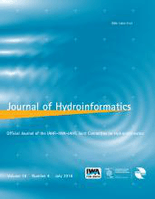
JOURNAL OF HYDROINFORMATICS
Exploring the Intersection of Water and Technology.JOURNAL OF HYDROINFORMATICS, published by IWA PUBLISHING in the United Kingdom, is a leading open access journal in the field of water-related sciences and engineering. Since its inception in 1999, it has evolved to become a pivotal platform for the dissemination of significant research and innovative findings, especially after adopting an open access model in 2021. The journal spans a broad scope, intersecting various disciplines such as atmospheric science, civil and structural engineering, geotechnical engineering, and water science and technology, with its 2023 rankings placing it impressively in the Q2 quartile across several categories. With an impact factor reflective of its esteemed position within the academic community and its reach underscored by its Scopus rankings, the JOURNAL OF HYDROINFORMATICS appeals to a diverse readership including researchers, professionals, and students dedicated to advancing knowledge in hydroinformatics and related fields. Whether you are seeking to publish your cutting-edge research or to stay informed on the latest developments, this journal serves as an indispensable resource.

Revue Internationale de Geomatique
Transforming Spatial Data into Actionable KnowledgeRevue Internationale de Geomatique (ISSN: 1260-5875, E-ISSN: 2116-7060) is a prestigious journal published by TECH SCIENCE PRESS, dedicated to advancing the field of geomatics. This journal serves as a vital platform for disseminating significant research findings, cutting-edge methodologies, and innovative applications within the realm of spatial data and technology. With an emphasis on interdisciplinary studies, it fosters collaboration among researchers, professionals, and students across various domains, including environmental science, urban planning, and geographic information systems (GIS). Although not an open-access journal, Revue Internationale de Geomatique maintains a rigorous peer-review process ensuring the publication of high-quality articles that contribute to the evolving landscape of geomatics. Given its relevance and commitment to scholarly excellence, this journal is a crucial resource for advancing knowledge and practices in the ever-growing field of spatial information science.

International Journal of Applied Earth Observation and Geoinformation
Unlocking Geospatial Innovations for a Sustainable Future.International Journal of Applied Earth Observation and Geoinformation is a premier peer-reviewed journal published by Elsevier, focusing on the integration and application of earth observation and geoinformation technologies across diverse fields. With an open access model established in 2020, this journal enhances accessibility and dissemination of research crucial for addressing global challenges related to climate change, resource management, and sustainable development. The journal occupies a notable position within the academic community, featuring a Q1 ranking in multiple categories including Computers in Earth Sciences, Earth-Surface Processes, and Global and Planetary Change, reflecting its significant impact and relevance in these disciplines. It is recognized for its high-quality articles that explore innovative methodologies and applications, making it an essential resource for researchers, practitioners, and students alike who seek to advance their understanding of earth dynamics and geospatial technology. The journal is indexed in Scopus with impressive rankings that underscore its high citation impact and scholarly influence, with an emphasis on providing a platform for the latest findings in management, monitoring, and policy in environmental science.
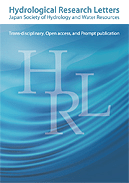
Hydrological Research Letters
Exploring Water Dynamics: Bridging Research and PolicyHydrological Research Letters (ISSN: 1882-3416) is a distinguished peer-reviewed journal published by JSHWR, JAGH, JAHS, JSPH in Japan. Established with open access since 2007, this journal serves as a critical platform for the dissemination of innovative research in the field of hydrology, water science, and technology. With an increasing impact factor, currently positioned in the Q3 quartile for both Earth and Planetary Sciences and Water Science and Technology, it attracts a diverse readership keen to stay abreast of groundbreaking findings that shape water management and environmental policy. Researchers, professionals, and students alike will find this publication an invaluable resource for enhancing their understanding of hydrological processes and their implications. The journal is committed to fostering open academic dialogue and encouraging high-quality contributions during its converging years from 2015 to 2024. For more information, authors and readers can access the journal at its address, C/O INT ACAD PRINTING CO, LTD, Shinjuku-ku, Tokyo, Japan.
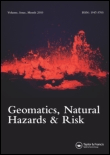
Geomatics Natural Hazards & Risk
Bridging Disciplines for Effective Risk AssessmentGeomatics Natural Hazards & Risk, published by TAYLOR & FRANCIS LTD, is a premier open-access journal that has been at the forefront of interdisciplinary research since 2010, addressing critical issues related to natural hazards and environmental risk management. With an impressive impact factor and ranking in the Q1 quartile in both Earth and Planetary Sciences and Environmental Science categories, this journal serves as a vital platform for researchers, professionals, and students dedicated to advancing knowledge in these fields. The journal's commitment to open access since 2016 ensures that its high-quality research is readily available to a global audience, fostering collaboration and innovation. Located in the United Kingdom, Geomatics Natural Hazards & Risk encompasses a broad scope of studies including geospatial technologies, risk assessment methodologies, and the societal impacts of natural disasters, making it an essential resource for anyone involved in the investigation and mitigation of natural hazards.

Hydrological Sciences Journal
Navigating the complexities of climate and hydrology.Hydrological Sciences Journal, published by Taylor & Francis Ltd, is a leading peer-reviewed publication dedicated to advancing the field of hydrology, spanning topics from water management to climate impacts on hydrological systems. With an impressive impact factor and a noted Q1 category ranking in Water Science and Technology, the journal occupies a pivotal role in the academic landscape, facilitating high-quality research dissemination since its inception in 1982. The journal is indexed in Scopus, holding a commendable rank of #48 out of 261 in the Environmental Science category, placing it in the 81st percentile among its peers. Although it does not offer Open Access options, the journal ensures extensive reach and readership through institutional subscriptions. As it converges toward its milestone of 2024, the Hydrological Sciences Journal remains an indispensable resource for researchers, professionals, and students eager to explore the latest advancements and methodologies in hydrological research.

Boletin Geografico
Fostering Global Dialogue on Geographical PhenomenaBoletin Geografico is a distinguished open-access journal published by the Universidad Nacional del Comahue, Department of Geography, promoting the dissemination of high-quality research in the field of geography. Since its inception in 1992, this journal has aimed to foster an interdisciplinary dialogue among scholars, practitioners, and students, providing insights into diverse geographical phenomena and their socio-environmental contexts. With its ISSN 0326-1735 and E-ISSN 2313-903X, the journal offers a rich repository of knowledge, accessible to a global audience, thereby enhancing visibility and impact. By promoting rigorous scientific inquiry and empirical analysis, Boletin Geografico serves as a vital platform for contributing to innovative geographical scholarship and engaging with contemporary issues, making it an essential resource for those invested in understanding the dynamic interplay of human and physical geography.
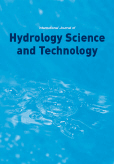
International Journal of Hydrology Science and Technology
Transforming Water Science through Groundbreaking ResearchThe International Journal of Hydrology Science and Technology, published by InderScience Enterprises Ltd, is a distinguished platform dedicated to advancing knowledge in the field of hydrology, environmental engineering, and water science. With an ISSN of 2042-7808 and an E-ISSN of 2042-7816, this journal, established in 2011 and continuing through 2024, serves as an essential resource for researchers, professionals, and students alike. Despite being categorized in the Q3 quartile across multiple disciplines including Earth and Planetary Sciences, Environmental Engineering, Waste Management and Disposal, and Water Science and Technology, the journal maintains a reputation for contributing significant findings that impact both theory and practical applications in addressing hydrological challenges. Currently unavailable through Open Access options, the journal remains committed to disseminating valuable research that informs sustainable practices in water resource management. The editorial team encourages submissions that explore innovative strategies and methodologies while fostering interdisciplinary discussions, making this journal a pivotal player in shaping the future of hydrological science.

Hydrology
Advancing water science for a sustainable future.Hydrology, published by MDPI, is a prominent open-access journal dedicated to advancing the field of hydrological science. Since its establishment in 2014, the journal has garnered a reputation for excellence, reflected in its classification within the Q2 quartile for 2023 across multiple categories including Earth-Surface Processes, Oceanography, Water Science and Technology, and Waste Management and Disposal. Based in Switzerland, Hydrology provides a vital platform for scholars and practitioners to disseminate research findings, promote innovative methodologies, and foster discussions on current trends affecting water resources and management globally. The journal is easily accessible online and aims to significantly contribute to the understanding of hydrological processes, offering insights that are pivotal for addressing contemporary environmental challenges. With Scopus rankings showcasing its growing influence, Hydrology is a crucial resource for researchers, students, and professionals committed to water science and sustainable practices.
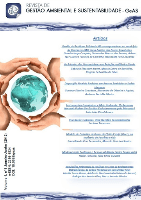
Revista de Gestao Ambiental e Sustentabilidade-GeAS
Exploring Innovative Paths in Environmental ManagementRevista de Gestao Ambiental e Sustentabilidade-GeAS, an esteemed open-access journal published by UNIV NOVE JULHO in Brazil, focuses on critical issues related to environmental management and sustainability, fostering interdisciplinary research that spans Geography, Urban Studies, and Environmental Science. With its commitment to accessibility since 2012, GeAS serves as a vital platform for researchers, professionals, and students to disseminate knowledge and innovative solutions in the realm of sustainability. Although it currently holds a Q4 ranking in Geography, Planning and Development and Management, Monitoring, Policy and Law, and Q3 in Urban Studies as of 2023, the journal aims to elevate its impact within these fields. It is uniquely positioned to contribute to the dialogue on environmental issues, policy implications, and urban development challenges in a rapidly evolving world. The journal's location in São Paulo further enriches its relevance and expertise in addressing both local and global environmental concerns.